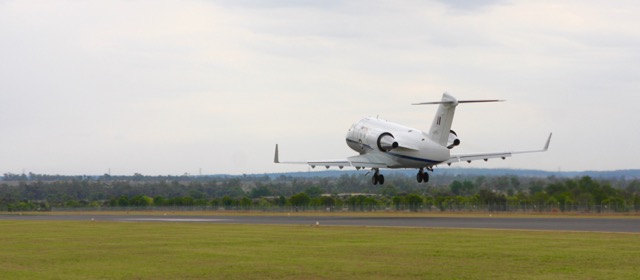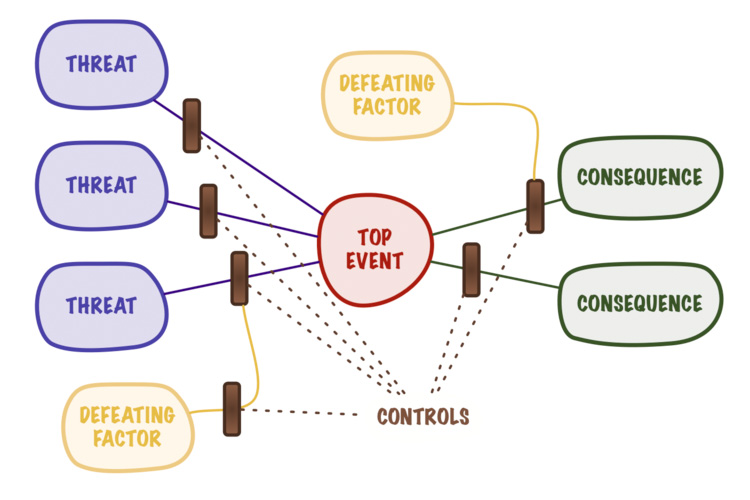
Posts about stuff relating to airports

ASW #1: COVID-19 & Safety: A Bow-Tie Risk Assessment Approach
Today’s theme is “maintaining airport safety through COVID-19”. Obviously, this can be a big topic. There are thousands of ways COVID-19 has impacted our daily lives - some large and some subtle. So, in thinking about this topic, I wanted to create a structure we could use to analyse the virus’s impact.
And I landed on the Bow-Tie model. Check it out.
Header: Karolina Grabowska (via Pexels)

(UPDATED) COVID-19 Bird Strike Update #1
UPDATE: What I thought was happening with wildlife strike rates during the COVID-19 downturn was not quite the case. I had a little issue with the time taken for reports to be included in the FAA Wildlife Strike Database and thankfully, this issue was picked up by a helpful colleague. See the details within.
Image credit: Azim Islam (via Pexels)

Better Safety Risk Management: Uncertainty & Decisions
A lot of us have been doing aerodrome safety risk management for a while now. In that time, I’ve made a lot of mistakes and that means, hopefully, that I have learned a bit about risk management. So, I’d like to share some of my best lessons from being a regulator and practitioner of safety risk management over that time.
Image credit: Taryn Elliot via Pexels

Risk Evaluation Series
I have never really liked risk assessments that involve some vague calculation of consequence and likelihood. I have witnessed, and perhaps been involved in, many arguments about where to stick some potential or even past disaster into a limited matrix.
A couple of years ago, I had a whinge/thought experiment on an alternative method of risk evaluation. I enjoyed the use of the term Probability-Impact Graph, rather than Likelihood-Consequence Matrix, to create a little theme - see if you can guess what it was.
I’ve repackaged these posts and a follow-up post for renewed consumption below. Each image is actually a link to the post.

Blown Away: Risk Management & Public Safety
As an avgeek, I love pictures and videos of aircraft coming into land low over beaches, roads and anything else that happens to be near the end of runways. But should we continue to accept injuries to and the death of people who congregate in these areas during aircraft operations?
Image credit: Richie Diesterheft

The $200K Kangaroo
I’m not a big fan of safety tropes. They are often repeated without much thought and eventually this repetition becomes detached from the concept the trope is trying to convey. With many tropes, there are few non-trivial or non-catastrophic events that can reinforce the trope.
The saying on my mind today is “if you think safety is expensive, try having an accident”. The “accident” I often think about is something big, something catastrophic and something that happens to other people. I rarely uttered this trope because I, personally, didn’t feel the power of it.
Now, thanks to a court case in Australia, I feel the power has been returned to this saying. We know have a non-catastrophic event with quantifiable costs associated with the “safety” part and the “accident” part. Plus, I think nearly every airport safety professional out there can empathise with the operator in the case

Seussian Safety Management
All three on my children have been brought into the world of reading partially through the works of Dr Seuss. I can't count the number of times I have read his books. As my kids have grown older, they have turned into the reader and read these amazing books back to me.
The Bike Lesson is one of my favourites for the very nerdy reason that towards the end of the book The Berenstains provide us with a short & succinct definition of safety. It's three simple stanzas that I think encapsulate modern safety management perfectly.

Unnecessary Segregation or Pragmatic Isolation?
I've been out in the "real" world for the past six months or so and in that time, my thinking on risk management has changed a little bit. So here it comes, a confession... I have being using a PIG recently and I have felt its use has probably helped with effective management of overall risk.

BTIII: Assessing Uncertainty
I can't lie to you. I have been turning myself inside out trying to get a handle on risk evaluation in the aviation safety sphere for close to five years now and I still don't feel any closer to an answer. And I say "an" answer and not "the" answer. Since you are always assessing risk in terms of your objectives, there can and will be multiple approaches to assessing the risk of the same scenario depending on whether you are considering your safety, financial or legal objectives.

BTII: Control-freak*
As a follow-on to my first post on the Bow-Tie risk assessment method, I thought I'd concentrate on controls (or barriers or whatever else you would like to call them). This is, after all, where all the action happens. Risk controls are how we spend most of our time - they are the practical aspect of managing risk.

Lessons from Taleb's Black Swan
Having just finished reading Nassim Taleb's The Black Swan, I initially thought about writing a not-so-in-depth assessment of the book's positive and negative points - but I'm not much of a book reviewer and a comprehensive critique is probably beyond my capabilities (at this stage). So, instead I thought I would focus on just a couple of the book's significant concepts and explore how they may apply in the aviation context.

BTI: Dressing up for Risk Assessments
I've been doing a lot of pondering on the Bow-Tie method of risk assessment for a project at work. Bow-Tie is a tool used by many, especially in the oil & gas industry, to create a picture of risk surrounding a central event. It's got a few positives and a few negatives but these can be overcome if you understand the limitations of the model being used.

On the Shoulders of Giants
I can't rule out that I had already viewed this presentation and the words pathways and proximal became lodged in my mind - seeds sown to sprout some distant day in the future. But upon reading this document (again?) I was struck by the apparent similarities with my proposed risk evaluation methodology, which was the subject of much ranting a few weeks ago - here, here, here, here and here.
Find out what presentation by reading on…

Wrapping Up PIGs .... For Now
Since I don't just want to be thought of as some PIG-hating obsessive lunatic, lets wrap this thread up for the moment. Quick recap: The traditional likelihood-consequence matrix (PIG - see original post) is not particularly useful when dealing with aviation safety. Why? Because a graduated consequence scale fails to recognise the perilous nature of aviation and consequence as a dimension isn't particularly useful when evaluating latent conditions remote from the ultimate outcome (death by aviation).
Alternate approach: Instead of scoring the consequence directly, I've offered two alternative dimensions under the generic title of influence1 - proximity and pathways.
In wrapping this up, I thought I would discuss what I think is the rationale behind this approach of using slightly off-centre indicators.

Influential Behaviour
Near the end of my last post, I used the Swiss-cheese model to highlight that many risk conditions1 worthy of attention are not necessarily proximate to the ultimate outcome. I also hinted in the post before that, that I thought this to be only half the story. To tell this story, let me introduce another accident causation modelling technique. It is called an AcciMap and it is gaining popularity because it offers a way of representing the relationships between events (these being things such as decisions, functions, tasks, actions, etc.). An AcciMap is set up in two dimensions with vertical lanes separating system levels of increasing generality as you move up and the horizontal axis having no fixed dimension or scale. The system levels begin very specific to the accident in question with equipment and actor activities making up the first two levels. The higher levels relate to organisational, regulatory authority and government policy and decision making.

One Step Back...
In continuing this little series I've got going here, I'd like to just quickly go back over a couple of points from last time. I'm trying to keep these posts relatively short. So that means I may have moved on to my next point a little too quickly. I guess the crux of the last post was that a graduated consequence scale is inappropriate in an aviation safety context. My two main points to back up that statement were:
the potential for a catastrophic event is persistent to the primary aviation activity of flying from A to B; and
that given aviation is a complex socio-technical system, risk conditions (call them hazards, events, or even just risks) upstream of the ultimate condition (death by aviation) cannot be categorised effectively.
I tried a few of these arguments out on some colleagues and they seemed unconvinced. So, I'm going to work on them a bit more here - this blogging thing is much more for my benefit than yours but thanks for stopping by anyway ;).
One step back...

Vulnerability & Proximity
In my last post, I commenced a whinge about the PIG or as it is more commonly known, the likelihood-consequence matrix. I signed off that post with a promise to further the discussion on the risk matrix within an aviation safety context. Here goes...
Consequence is an inappropriate dimension to consider in aviation safety. For two reasons which I call vulnerability and proximity. Let's take them in turn.

My Problem with PIGs
You can't swing a euphemism without hitting one when you're playing in the risk management metaphor. They're everywhere. Whenever you start looking at anything risk management related, you are sure to find a PIG. PIG stands for Probability-Impact Graph - otherwise known as likelihood-consequence matrix or frequency-severity chart or some combination of these words. I'm most familiar with the LxC matrix label, so I'll use it from here on in.
Over the past year or so, I've being growing more and more uneasy with the application of this tool within the aviation safety environment. I wasn't seeing, however, the same discontent in others and therefore, started to doubt my own reservations. Luckily, I found some like-minded people over at LinkedIn (membership to both LinkedIn and the group are required to view the actual discussion) with a Mr Stephen Cresswell putting his thoughts on paper here.
